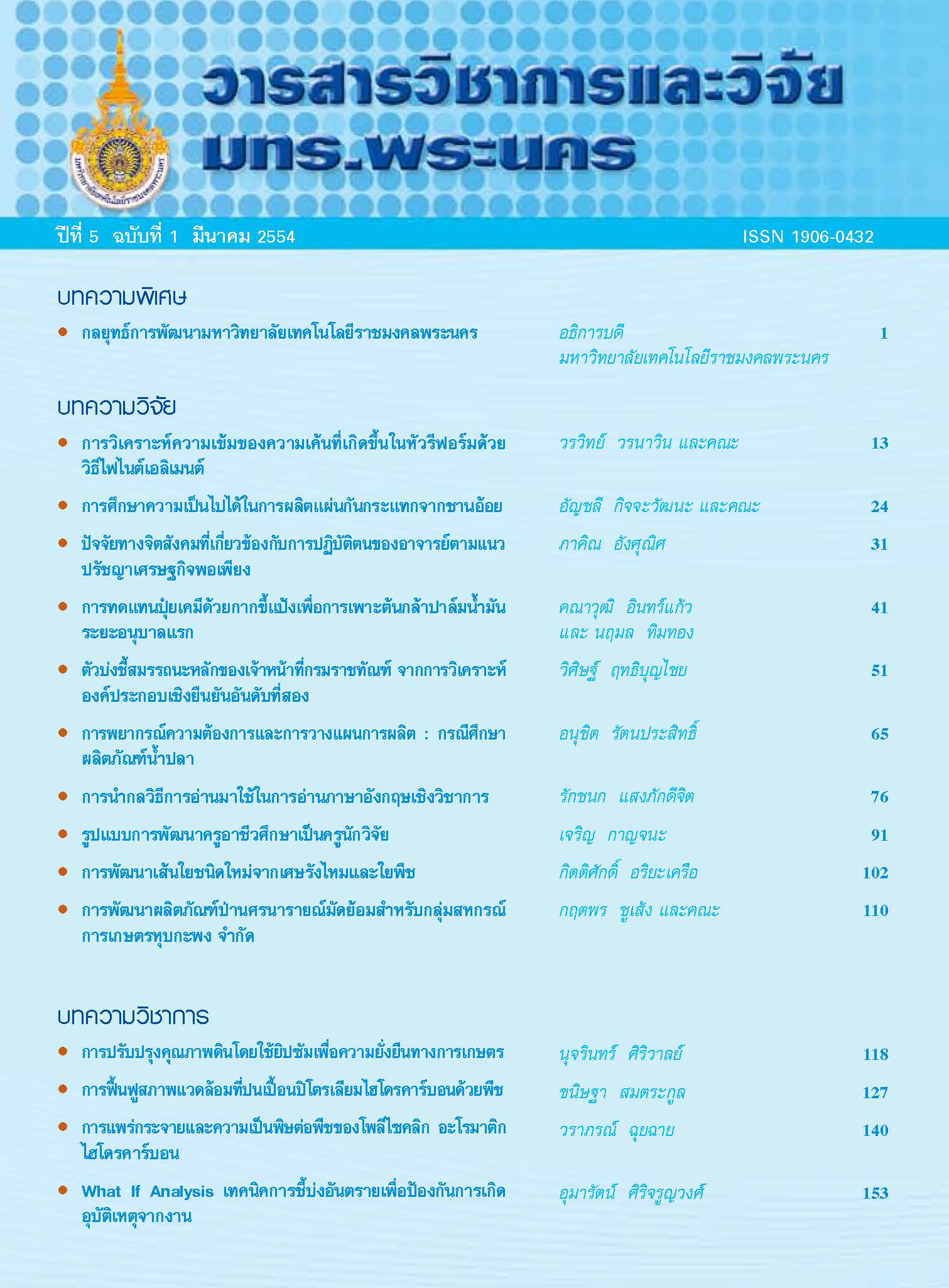การปรับปรุงคุณภาพดินโดยใช้ยิปซัมเพื่อความยั่งยืนทางการเกษตร
Main Article Content
Abstract
บทคัดย่อ
ยิปซัม เป็นสายแร่ชนิดหนึ่งที่พบได้ในธรรมชาติและจากการสังเคราะห์ โครงสร้างหลักประกอบด้วย แคลเซียมไอออน (Ca2+) ซัลเฟตไอออน (SO42-) และโมเลกุลของน้ำ (H2O) มีสูตรทางเคมี คือ CaSO4.2H2O จากโครงสร้างดังกล่าวจึงมีการนำไปใช้ประโยชน์ด้านการเกษตร กล่าวคือ เป็นสารปรับสภาพดินกรดและดินเค็ม โดยแคลเซียมไอออนจะเข้าไปอยู่แทนที่อะลูมิเนียมไอออน (Al3+) ในดินกรด และโซเดียมไอออน (Na+) ในดินเค็ม ได้อย่างมีประสิทธิภาพ จึงเป็นการช่วยลดระดับความเป็นกรดและความเค็มในดิน ลดภาวะแน่นทึบของดิน ทำให้ ดินมีความร่วนซุย เหมาะสมกับการใช้ประโยชน์ทางการเกษตรมากขึ้น นอกจากนี้ ทั้งแคลเซียมและกำมะถันจาก ยิปซัมยังเป็นธาตุอาหารเสริมที่สำคัญของพืชอีกด้วย ถ้ามีการนำยิปซัมมาใช้ในการปรับปรุงคุณภาพดิน จะช่วยลด ปัญหาความเสื่อมโทรมของดินให้เหมาะสมกับการเพาะปลูก ช่วยเพิ่มผลผลิตทางการเกษตร และเป็นการอนุรักษ์ ดิน สามารถบรรเทาปัญหาพื้นที่ทำกิน อีกทั้งจะทำให้เกิดความยั่งยืนต่อการพัฒนาการเกษตรของประเทศ
คำสำคัญ : ยิปซัม, สารปรับปรุงดิน, ดินกรด, ดินเค็ม, การแน่นทึบของดิน
Abstract
Gypsum is a substance derived from nature and some synthesis. Its structure consists of calcium ion (Ca2+), sulphate ion (SO42-) and molecules of H2O. Its formula is CaSO4.2H2O. From this structure, gypsum is used in agriculture as soil conditioners, especially acid soil and saline soil. The calcium ion will replace aluminium ion (Al3+) in acid soil and sodium ion (Na+) in saline soil. It is effective to reduce acidity, salinity, compaction in soil and increase friable condition which is suitable for agriculture. Moreover, calcium and sulphur are the secondary nutrients for plants. Therefore, the application of gypsum as soil conditioners will reduce soil deterioration, increase agricultural profits, conserve of soil, relieve problem of agricultural areas and maintain our agricultural sustainability.
Keywords : Gypsum, Soil Conditioners, Acid Soil, Saline Soil, Soil Compaction


